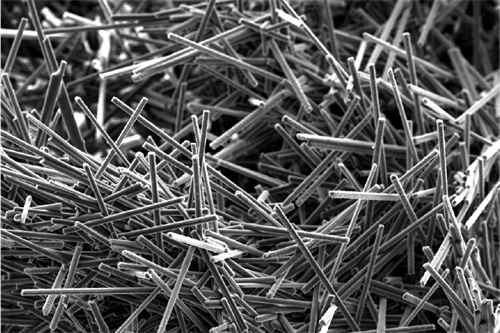The production of Titanium Fiber Felt for PEM involves highly complex technical requirements, mainly due to its material properties, areas of application, the high precision required in the production process, and the high standards in terms of performance and stability. The following are the reasons for the high technical requirements for the production of Titanium Fiber Felt for PEM:
- Titanium material properties
Inertness and corrosion resistance: Titanium is a chemically inert metal that is extremely resistant to corrosion and is therefore widely used in extreme environments such as electrolysis of water, fuel cells and chemical production.
High melting point and difficult processing: Titanium has a melting point of up to 1668°C, making it difficult to process, especially in the production of micron and nano-sized fibres, which requires more equipment and technology.
Oxide film treatment: titanium is easy to form a layer of oxide film in the air, the production process needs to use the pre-treatment process of removing the oxide film to ensure the purity and activity of the surface of the titanium fibre and to improve the performance of the material.
- High porosity and three-dimensional structure
Titanium Fiber Felt for PEM usually needs to have 60-70% porosity to ensure good gas-liquid transport properties. This three-dimensional mesh structure facilitates diffusion and the stability of the reaction process, which are core properties for applications such as fuel cells and electrolytic water devices.
The production process needs to ensure a uniform distribution between the fibres to maintain porosity and pore size uniformity. This requires sophisticated lay-up and sintering processes to form a stable pore structure and avoid mass transfer and performance problems caused by uneven porosity.
- Special lay-up and vacuum sintering processes
The key process for the production of Titanium Fiber Felt for PEM is the special lay-up of micron-sized titanium fibres to form a dense mesh structure and sintering at high temperatures in a vacuum environment to make the fibres fully bonded to each other.
The sintering process needs to be carried out in an exceptionally high-temperature vacuum environment to avoid oxidation and contamination by impurities, and to ensure effective bonding between the titanium fibres, which improves the mechanical strength, high-temperature resistance and chemical stability of the Titanium Fiber Felt for PEM.
Vacuum sintering also requires precise control of temperature and sintering time to prevent the material structure from being too hard or too brittle, which would affect the flexibility and performance stability of Titanium Fiber Felt for PEM.

- Electrochemical Requirements
Titanium Fiber Felt for PEM needs to have high electrical conductivity and excellent electrochemical properties when it is used as a gas diffusion layer in electrolysis of water for hydrogen production and fuel cells. In order to improve the electrical conductivity, the surface of Titanium Fiber Felt for PEM usually needs to be coated with precious metals (e.g. platinum, iridium, etc.) to enhance its electrocatalytic activity.
The plating process requires a high degree of precision to ensure that the precious metal particles are uniformly distributed on the surface of the Titanium Fiber Felt for PEM as well as to ensure the stability of the plating layer to prevent the precious metals from falling off, which can affect the efficiency and lifetime of the electrolysis.
For this reason, pulse plating or plasma cleaning is usually used to ensure the uniformity and durability of the coating, which is a complex and costly process.
- Durability and high temperature resistance
Titanium Fiber Felt for PEM needs to work in high temperature and corrosive environment for a long period of time, so the durability and high temperature resistance of the material must be strictly process control and testing to ensure its stability under harsh conditions.
In order to meet the requirements of high temperature resistance and high load, the production process needs to strictly control the purity, structural stability and heat treatment process of the material to reduce the oxidation and deformation of the material under high temperature.
- Surface treatment and precision requirements
Titanium fibre mats need to be treated on the surface to increase the surface area and improve the bonding with the coating. For example, pickling or plasma treatment removes surface contaminants and increases the surface roughness of the fibres, which contributes to stable coating adhesion.
Parameters such as diameter, thickness and pore size of micron-sized titanium fibres require precise control to ensure consistent mass transfer performance. The production process requires precise lay-up, cutting and inspection techniques to meet the stringent specifications in different fields.
- Regenerability and durability
The production of titanium fibre mats also takes into account the regenerative properties of the material, ensuring that its properties can be restored after use by means of backwashing, for example. Due to the complex chemical environment of the application scenario, the regeneration requirements further enhance the material durability and surface treatment processes required during.